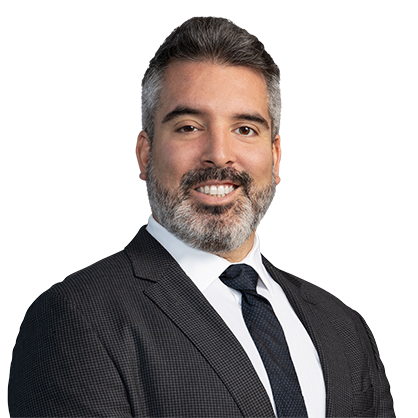Insights
Thought Leadership
3D Zoning: Miami's TSND Legislation Expands Toolbox for Transit Oriented Development
Introduction
On July 24, 2025, the City of Miami adopted new legislation establishing Transit Station Neighborhood Districts (TSNDs), intended to accelerate transit-oriented development near current and future rail stations. This "TSND Legislation" gives developers a powerful new tool, complementing Florida's Live Local Act and Miami-Dade County's expanding Rapid Transit Zone (RTZ) program. City leaders hope the TSND framework will help address housing affordability and traffic congestion while retaining local control in the face of state and county preemption.
Transit Station Neighborhood Districts: How Does it Work?
The legislation consists of two ordinances working together to implement the TSND framework:
- Comprehensive Plan Amendment (Ordinance No. 14384)– amendments to the City's Comprehensive Plan adds a future land use category for TOD Nodes, with higher established densities from 150–500 units/acre and FLR ratios of 11–40.
- Miami 21 Amendment (Ordinance No. 14385)– amendments to Article 3 of the Miami 21 Code, creating standards for Train Station Neighborhood Districts (TSNDs), allowing qualifying properties within TOD Nodes to petition to develop to more permissive standards of the T6-12 or T6-24b transect zones.
- Qualifying Properties. Properties generally must be those within the City's municipal boundaries located within ½ mile of a current or future train station. Properties within 1 mile of a current or future train station may be eligible if supported by significant transit infrastructure improvements. Properties within T3 transect zones and NCDs are excluded. Historic properties require separate approval through a Certificate of Appropriateness issued by the City's Historic and Environmental Preservation Board.
- TOD Nodes. Properties meeting eligibility criteria must first be redesignated as a TOD Node on the City's future land use map. The TOD Node establishes a maximum density ranging between 150 and 500 units per acre and elevated FLR to allow for additional building envelopes. Aside from properties within the recently adopted Little River TOD Node, owners must wait for the City to initiate a district-wide TOD Node or petition through a private application to amend the City's future land use map. Currently the City limits map amendment applications to be filed during its semi-annual cycle.
- General & Enhanced TSNDs. Once located within a TOD Node, developers can pursue development approvals under two (2) pathways.
- General TSND: allows eligible properties within 1/2 mile to access development standards associated with T6-12 zoning (up to 12 stories by right and 20 stories with bonuses); and properties between 1/2 mile and 1 mile to access development standards associated with T6-8 zoning. Parking flexibilities permitted within T6-8 and T6-12 are permitted by right.
- Public Benefits required for General TSND development include pedestrian and mobility connections from the development site to a transit stop and modest affordable housing commitments.
- Affordable Housing Commitment. Minimum 3% of dwelling units for households earning <60% AMI, minimum 5% of dwelling units for households earning <100% AMI, and minimum 2% of dwelling units for households earning <120% AMI.
- A General TSND requires the developer to file an Exception application, to be noticed for one (1) public hearing for approval by the Planning Zoning & Appeals Board.
- Enhanced TSND allows eligible properties exceeding three (3) acres of land through a master plan to access broader development standards associated with T6-24b zoning, including up to 24 stories by right and 24 stories with bonuses) and other flexibilities including waiving cross block passage requirements and minimum building spacing above the podium. Enhanced TSNDs are also able to include educational uses, outdoor dining, and large scale retailers by right, and reduced minimum parking ratios in some cases 50% of the City's minimum requirements.
- Public benefits required for Enhanced TSND development include a more robust package—including construction of significant station infrastructure or contribution amounting to 1.5% of project costs, enhanced landscaping improvements, public park space, enhanced bike facilities, small business development or micro-retail spaces, green building certification, and other commitments.
- Affordable Housing Commitment. Minimum 6% of dwelling units for households earning <60% AMI, minimum 10% of dwelling units for households earning <100% AMI, and minimum 4% of dwelling units for households earning <120% AMI.
- An Enhanced TSND requires the developer to file an Exception application with a master plan and supporting diagrams. The Exception is scheduled and noticed for two (2) public hearings, with a recommendation made by the Planning Zoning & Appeals Board and final approval by the City Commission.
- General TSND: allows eligible properties within 1/2 mile to access development standards associated with T6-12 zoning (up to 12 stories by right and 20 stories with bonuses); and properties between 1/2 mile and 1 mile to access development standards associated with T6-8 zoning. Parking flexibilities permitted within T6-8 and T6-12 are permitted by right.
TSND Legislation: Policy Rationale and Response to State & County Preemption
Over the past decade and particularly following the influx of high net-worth individuals post-COVID, Miami has become one of the most expensive housing markets in the country. Housing affordability is the most pressing issue. Miami's transportation system has been a major focus for policymakers at all levels of government, as congestion undermines both quality of life and the local economy. Recognizing the relationship between land use planning and these key issues, state and county governments have increasingly taken measures to preempt local government zoning authority in hopes of spurring construction of new housing and creating ridership to support transit.
- Miami-Dade County Rapid Transit Zones (RTZ). The County first enacted enabling legislation for Rapid Transit Zones in the 1970s to support the original Metrorail system. For decades, RTZs in practice only applied to County-owned land adjacent to metrorail stations – effectively limiting the County's RTZ jurisdiction to existing stations, parking lots and a handful of government office buildings. Following adoption of the SMART Plan in 2016, the County expanded RTZ zones, through RFPs for public-private partnerships and encouraging private properties to petition for inclusion within RTZ jurisdictional boundaries. The County's RTZ Zoning offers additional height, intensity and parking reductions in connection with mixed-use projects. Developers may also consolidate permitting under County jurisdiction – rather than navigating both City and County permitting processes.
- Florida's Live Local Act. Enacted in 2023 through Senate Bill 102, this landmark legislation reshapes Florida's regulatory environment. The Live Local Act grants developers of qualifying properties the right to increased density and floor area ratios equal to the maximum permitted within the jurisdiction, and increased height up to the maximum permitted within one (1) mile, so long as at least 40% of dwelling units are income-restricted to households earning less than 120% AMI for 30 years. In Miami, this translates to 1,000 units per acre. The Act prohibits the City from requiring public hearing approvals, permits by right parking reductions, and grants significant ad valorem tax reductions.
- City of Miami Response. The pace of change is unprecedented, with seemingly annual amendments to enabling ordinances and statutes governing the County's RTZ and the Live Local Act, respectively. Unsurprisingly, the City of Miami has been exploring policy responses to retain autonomy over future growth, permitting and tax base. TSNDs represent the City's effort to remain competitive amid state and county preemption.
TSND Legislation: Potential Benefits and Hurdles
- Potential Benefits. For developers within close proximity of existing and future rail stations, the TSND Legislation offers:
- Higher density, intensity, and height than otherwise permitted under Miami 21, enabling developers to realize higher development yields on a broader category of land in proximity to transit stations.
- Ability to work around Miami 21 restrictions on successive zoning, which otherwise cap increases in density, intensity and height to the next highest intensity transect zone (i.e. a T5 property can jump to T6-12 or T6-24b).
- Eligibility to mixed-use multifamily development with only 10% or 20% affordable housing commitment that otherwise would not qualify for utilizing development bonuses available under the Live Local Act.
- Potential efficiencies in approvals compared to the standard future land use amendment and rezoning application process under the Miami 21 Code.
- Potential Hurdles. While the development rights accessible to applicants are significant, several challenges remain:
- Unlocking additional TSND development rights requires multiple quasi-judicial hearings prior to submitting a building permit, including at the time the property is incorporated within a TOD Node and then later in evaluating a site plan application – adding complexity, time and entitlement risk.
- Uncertainty over the ability for private applicants to initiate TOD Node petitions and the proposed density to be established for each TOD Node.
- Enhanced TSNDs may involve extended negotiations with staff and community stakeholders over public benefit contributions and political dynamics attributed to seeking final public hearing approval from the City's commission as ultimate arbiter of applications.
3D Zoning Regime: What does this mean for developers looking ahead?
Miami's TSND Legislation reflects a new "3D Zoning" paradigm. Developers must evaluate not only a site's underlying zoning, but also stacked regulatory overlays at the local, county and state level. Only by examining all three dimensions can a developer accurately identify potential development capacity, assess risk, and make informed decisions about the project's optimal entitlement path.
This framework creates a menu of entitlement options – offering pros and cons to consider.
- Live Local Act is attractive to developers delivering significant workforce housing meeting the state's eligibility requirements and avoiding public hearings.
- TSND Legislation offers significant height and floor area boosts and flexibility for developers of properties within close proximity of train stations not meeting the Live Local Act's mandates.
- RTZ Zoning is valuable for true mixed-use projects near stations seeking streamlined County approvals and not looking to maximize residential density.
Conclusion
Miami's TSND Legislation signals a new era of "3D Zoning." Strategic due diligence will be essential to maximize land value, manage entitlement risks, and chart the optimal path forward.
Owners, developers and real estate industry participants should consult with counsel to evaluate dimensional aspects of a property and alternative entitlement strategies.




